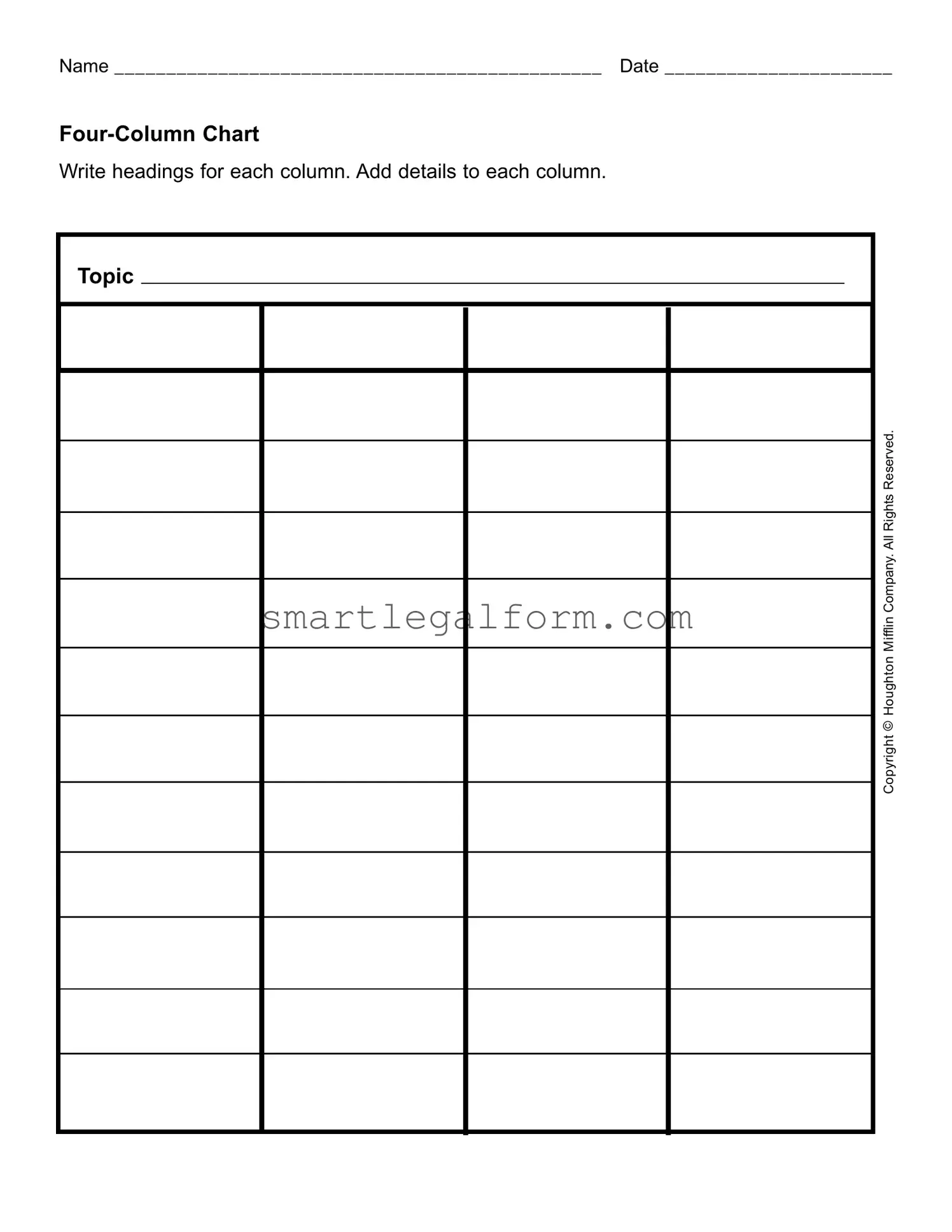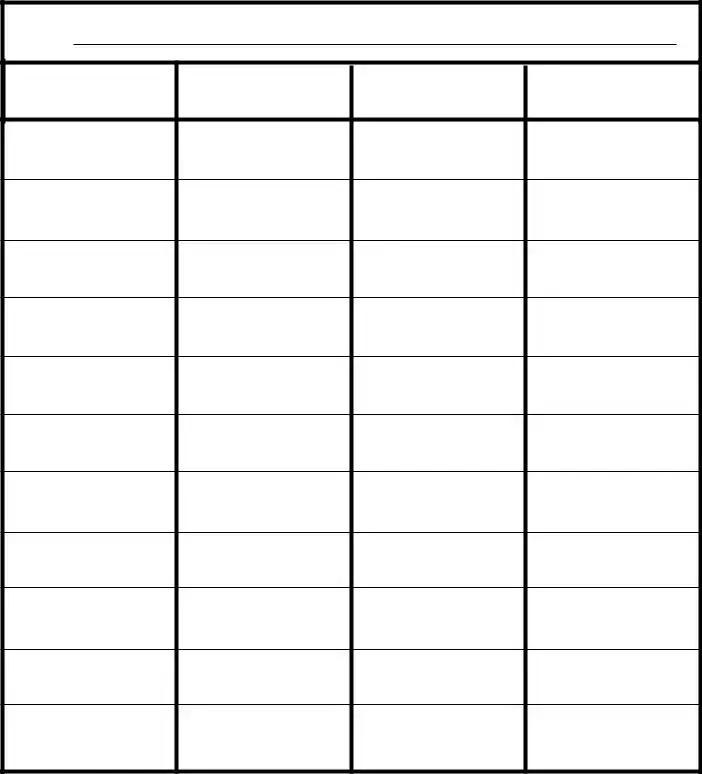When filling out the Four Column Chart form, individuals often overlook the importance of clear and concise headings. The headings serve as a guide for what information should be included in each column. Without well-defined headings, the chart can become confusing and difficult to interpret. This lack of clarity can lead to miscommunication and errors in data entry.
Another common mistake involves neglecting to provide sufficient details in each column. Each section of the chart is designed to capture specific information related to the topic. If individuals fail to elaborate adequately, they risk losing valuable context. This can hinder the effectiveness of the chart, making it less useful for analysis or decision-making.
People frequently make the error of not keeping the information organized. A Four Column Chart is most effective when the details are presented in a logical sequence. When information is scattered or presented haphazardly, it can create confusion. This disorganization can lead to misunderstandings and diminish the chart's overall utility.
Additionally, individuals often forget to review their completed charts before submission. This oversight can result in typographical errors, missing information, or incorrect data. A thorough review can catch these mistakes, ensuring that the chart accurately reflects the intended information.
Lastly, some users fail to consider the audience for whom the chart is intended. Understanding the needs and expectations of the audience can significantly influence how the chart is filled out. Tailoring the content to suit the audience’s level of understanding can enhance communication and ensure that the information is conveyed effectively.

